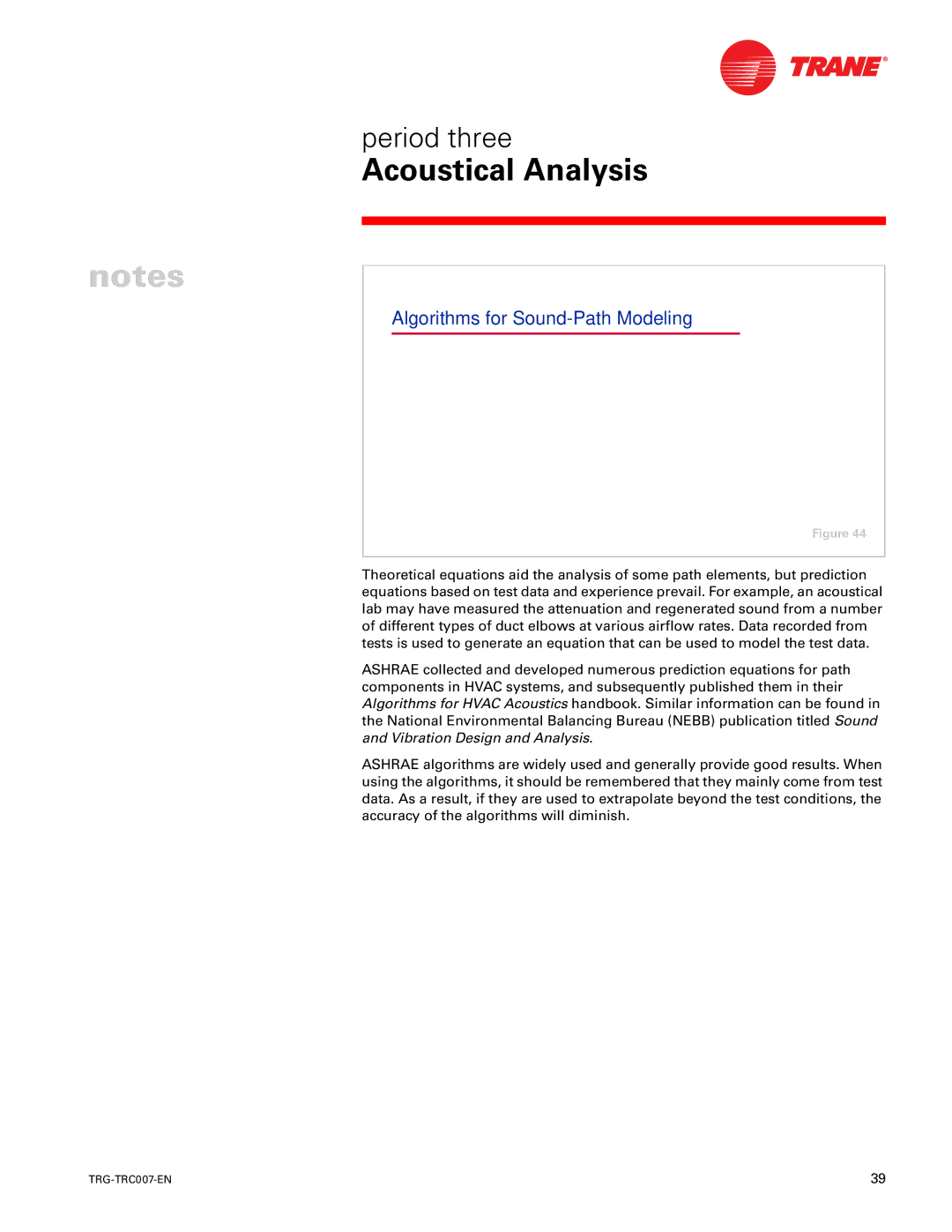
period three
Acoustical Analysis
notes
Algorithms for Sound-Path Modeling
Figure 44
Theoretical equations aid the analysis of some path elements, but prediction equations based on test data and experience prevail. For example, an acoustical lab may have measured the attenuation and regenerated sound from a number of different types of duct elbows at various airflow rates. Data recorded from tests is used to generate an equation that can be used to model the test data.
ASHRAE collected and developed numerous prediction equations for path components in HVAC systems, and subsequently published them in their Algorithms for HVAC Acoustics handbook. Similar information can be found in the National Environmental Balancing Bureau (NEBB) publication titled Sound and Vibration Design and Analysis.
ASHRAE algorithms are widely used and generally provide good results. When using the algorithms, it should be remembered that they mainly come from test data. As a result, if they are used to extrapolate beyond the test conditions, the accuracy of the algorithms will diminish.
39 |
